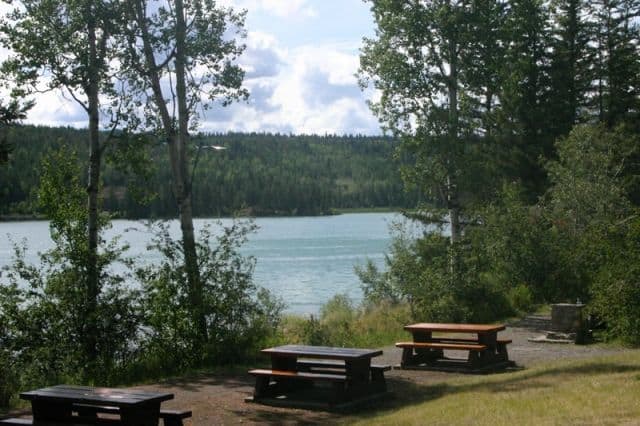Lac La Hache Provincial Park

Park Size: 24 hectare
Park Amenities:
Lac La Hache Provincial Park in Lac La Hache, South Cariboo-Chilcotin Region, British Columbia, Canada is one of the more easily accessed recreational lakes in the region. The massive lake is popular for camping, water skiing, canoeing, boating, hiking, fishing and swimming during the summer months. During the winter months people arrive at the lake to ice fish.
At one time the First Nation people called the lake - Lake Kumatakwa. At another time is was called Axe Lake named after a fur trapper who lost an axe in the lake. Established in 1956, the 24 hectare park is, mostly, under the cover of Douglas Fir trees with a small supporting cast of lodgepole pine and aspen tress.
The Lac La Hache Provincial Park is divided into two sections - the campground area is east of the highway and the day use area and lake is west of the highway. The campground includes 80+ campsites with picnic tables and fire pits, a sani station, flush toilets and fresh tap water.
Across the highway on the lake is a day use area with picnic tables, a sandy beach, playground, boat launch, flush toilets, change rooms and a large wooden picnic shelter with a BBQ pit. The day use parking lot is large and is RV and Bus Tour friendly.
Water skiing and fishing seem to be the most popular activities on the lake. Because the lake is stocked with Rainbow and Kokanee Trout it attracts fishing enthusiasts to the region. The size of the lake provides the room required for water skiers to do their thing. The double wide paved boat launch provides easy access to the lake for both groups.
There is a short 2 kilometre walking trail in the park named the Wagon Road Self-Guided Nature Trail. It is a trail following the same path as the early settlers, miners and fur traders who once traveled the region seeking riches.
The region is also a popular wildlife viewing area. Some of the birds visiting the park include ospreys, Bald Eagles, red-tailed hawks, chickadees, pileated woodpeckers, loons, Trumpeter Swans and nuthatches. Some of the land based wildlife in the area includes mule deers, lynx, chipmunks, moose and black bears.
Explore Lac La Hache Provincial Park in Lac La Hache, South Cariboo-Chilcotin Region, British Columbia, Canada
Address:








